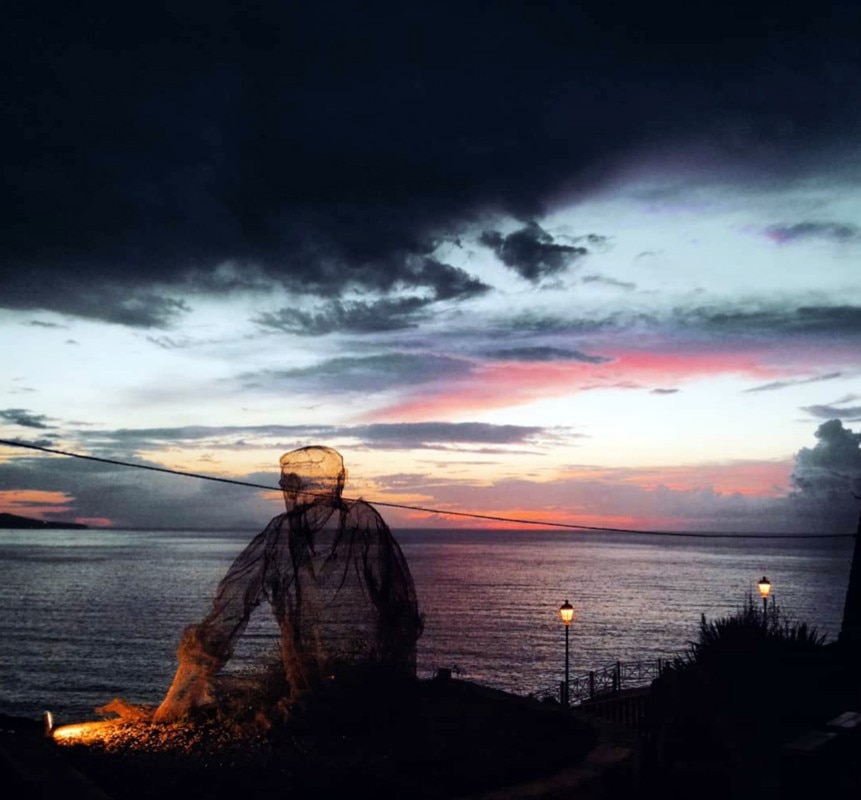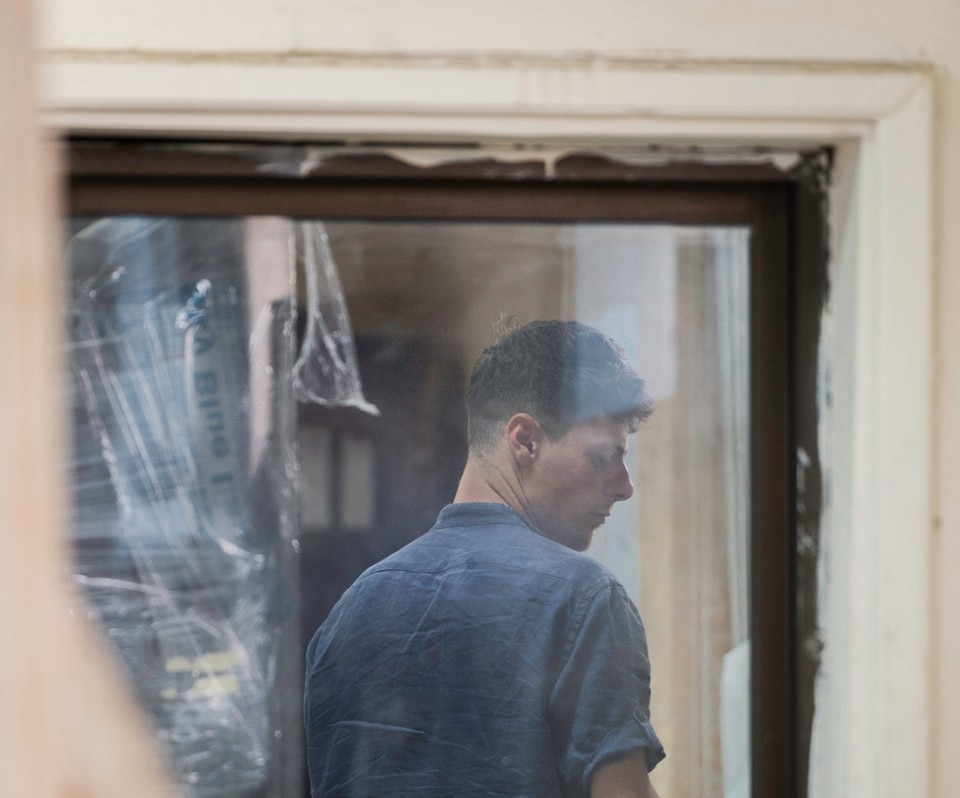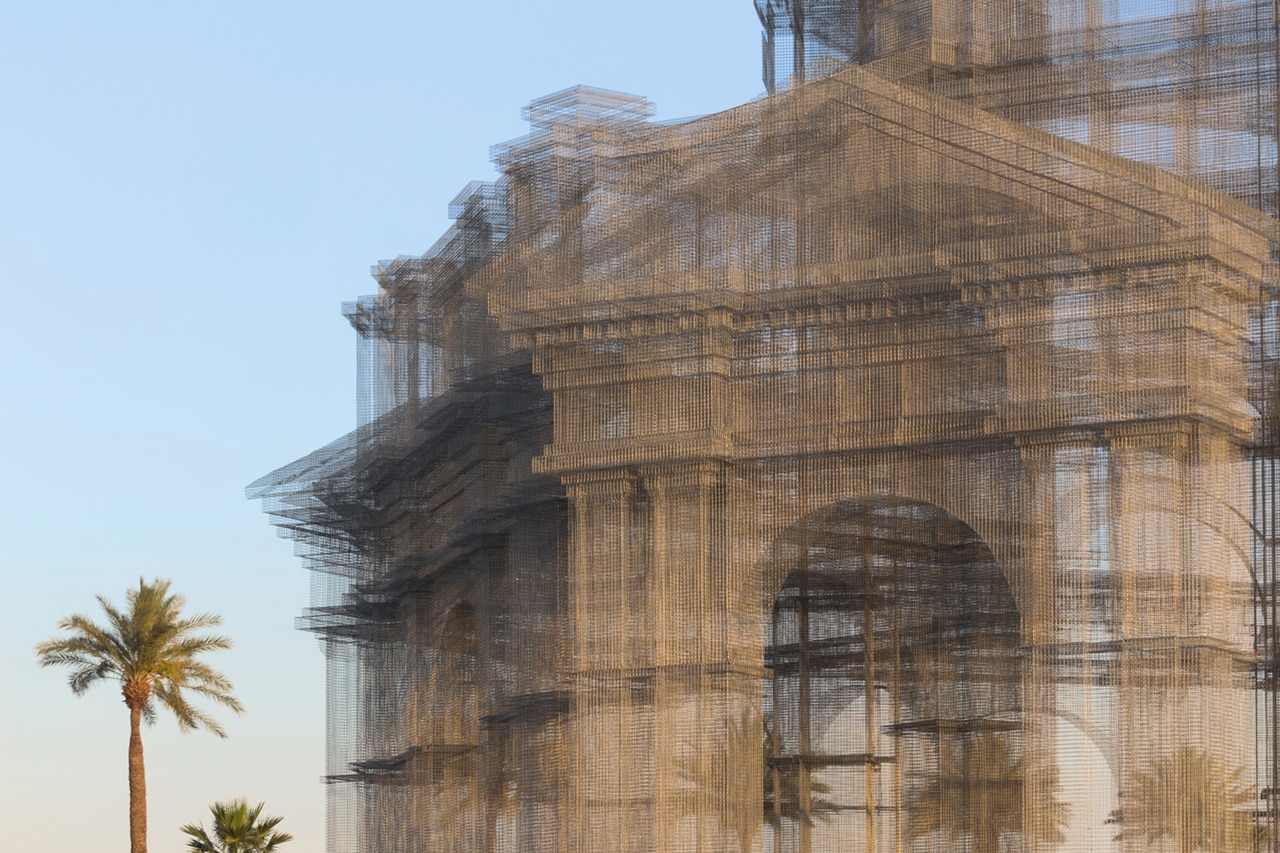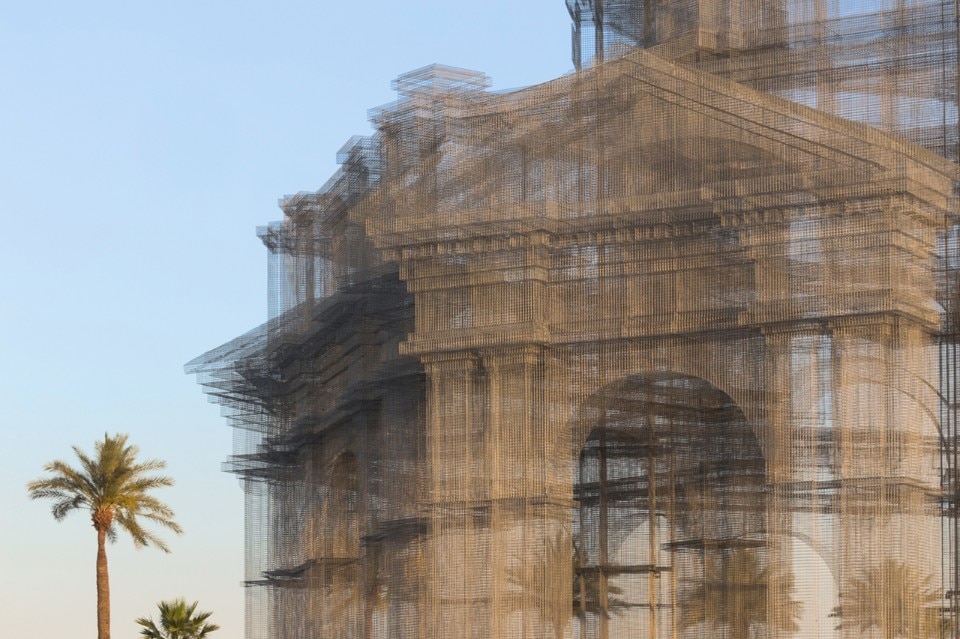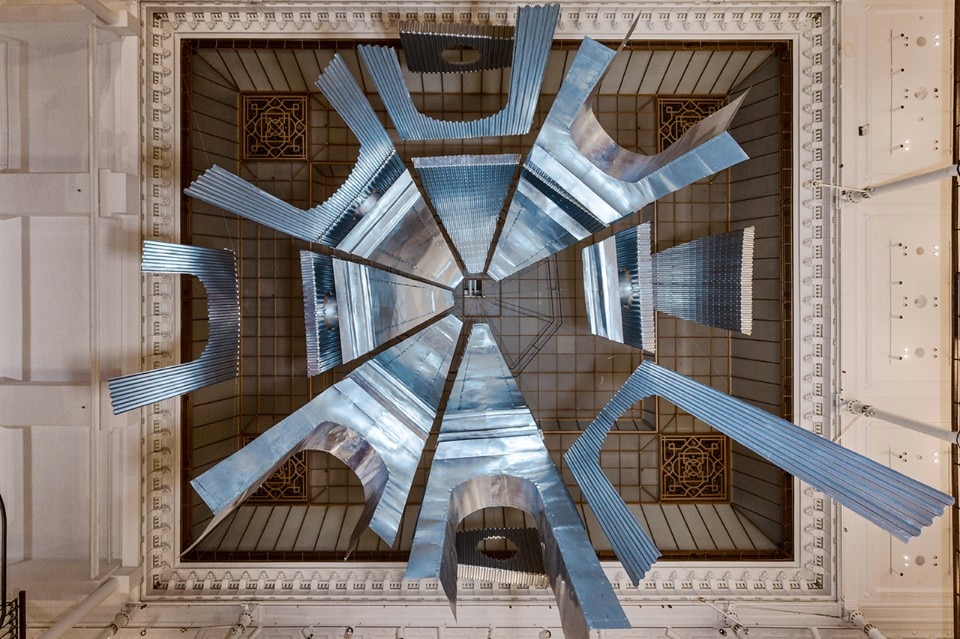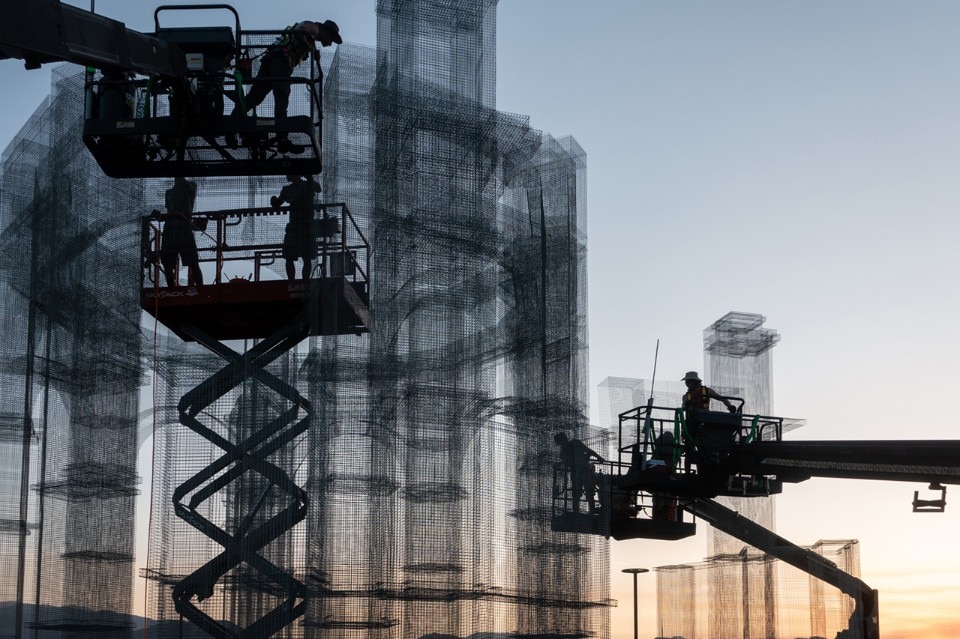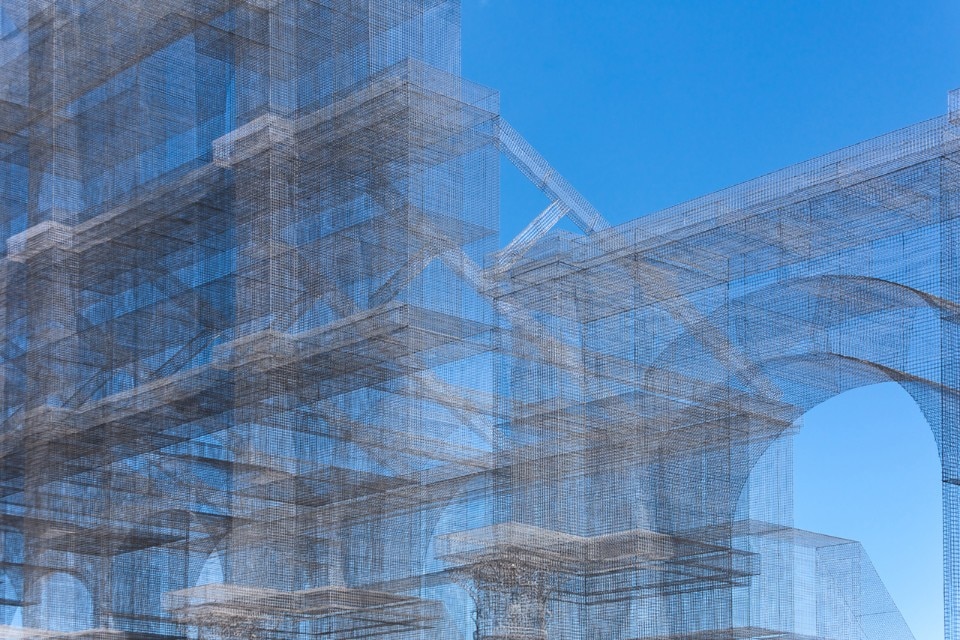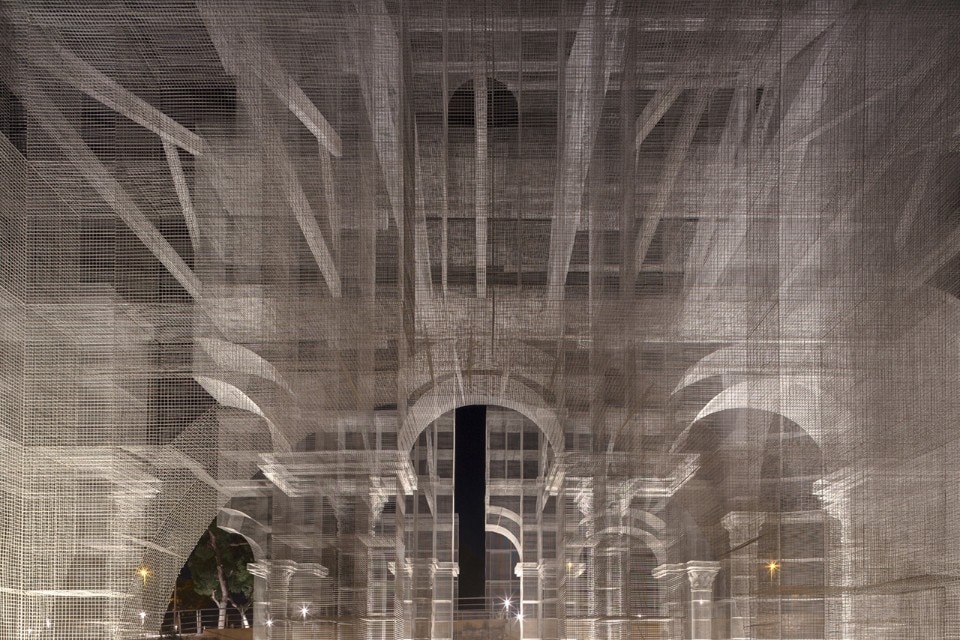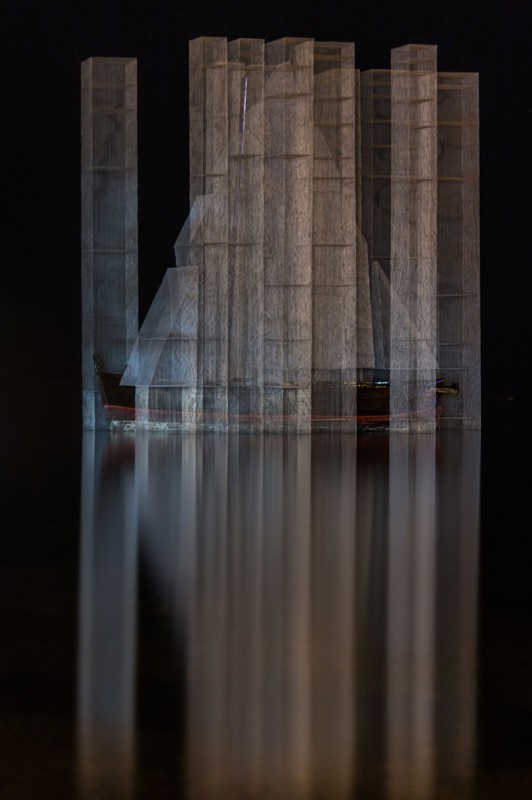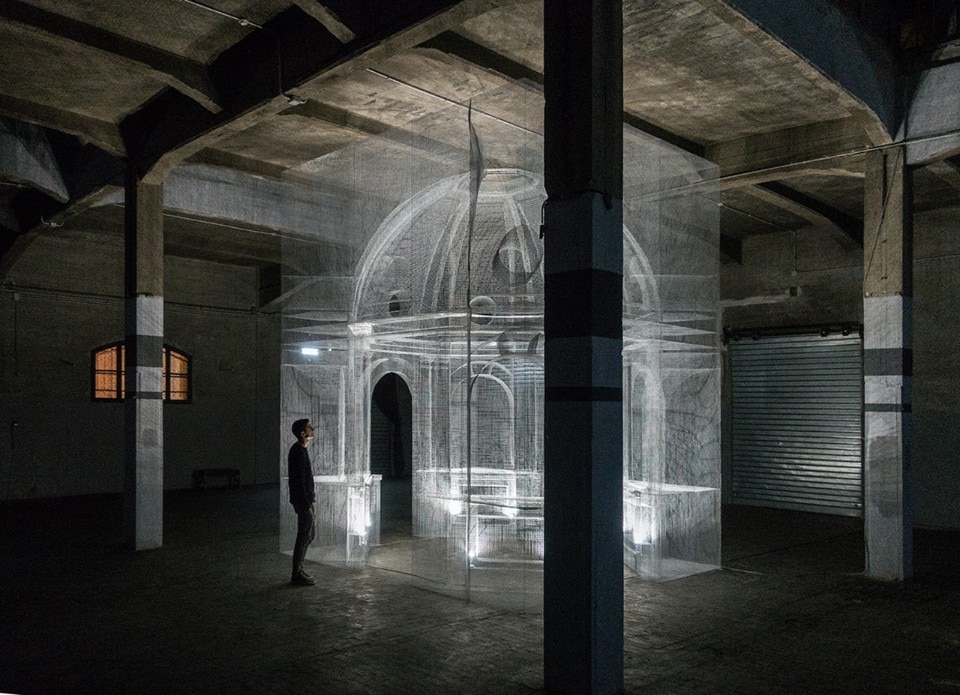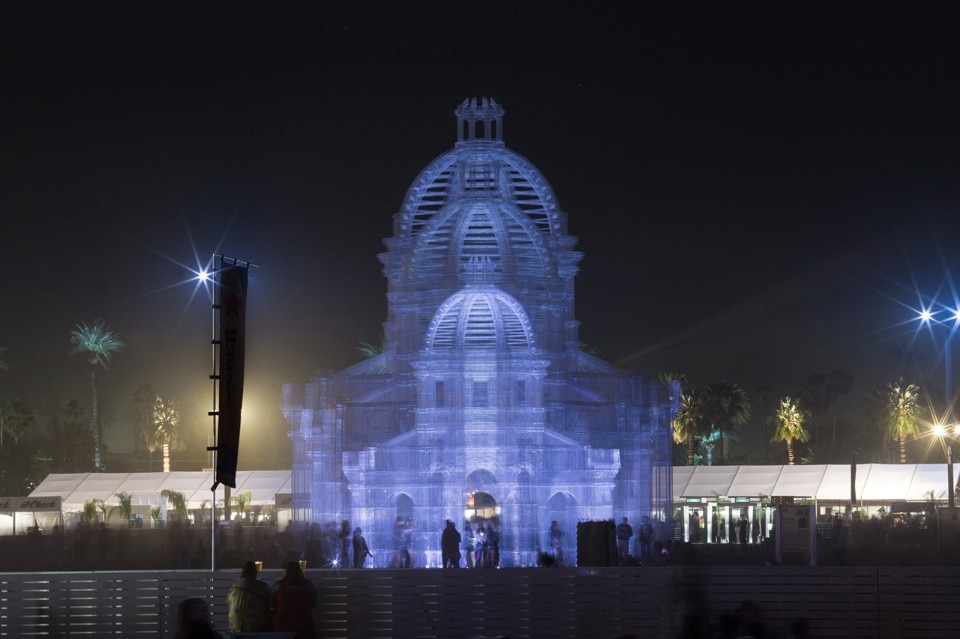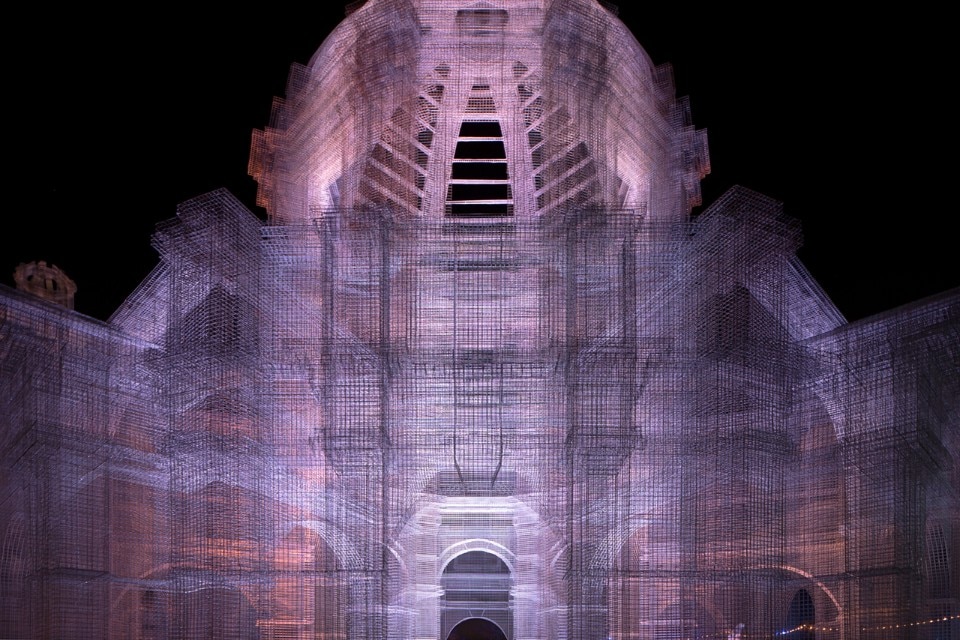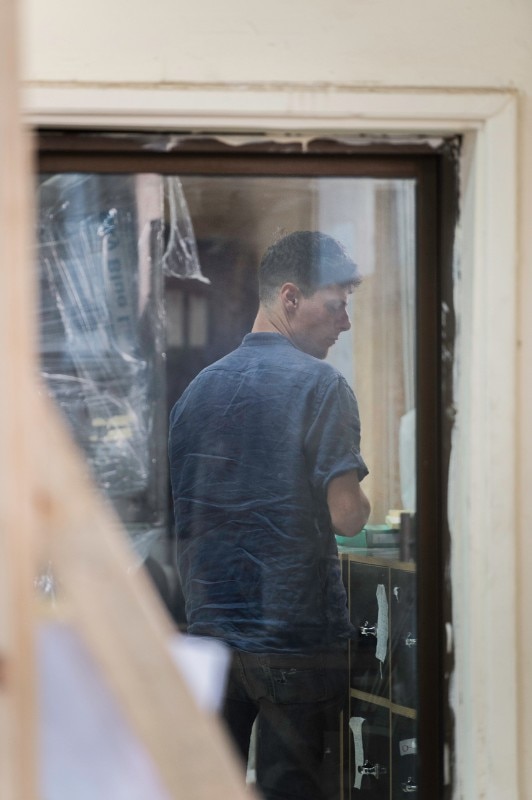The transparency of the metallic net suspends something in the air that isn’t there, withdrawing from reality and from its visual identity. Edoardo Tresoldi thus creates a completely new dialogue between art and the world, embracing the context, while playing with architectural abstractions and industrial materials in his ethereal dimension. This meeting of classic archetypes and modernist symbols generates a completely new contemporary perspective.
How does a project come about?
I begin with the physical, historical and social elements of the venue and its territorial and climatic characteristics. I analyse the emotive relationships which are created between venue and person, constructing narrative elements which can be used through this channel. The entire project is created by my studio through a participative process and continuous discussion. The fitting team is made up of young people who are all under 30.
Your imagination feeds on...
Places and people. I have always been fascinated by the sacred nature of sanctuaries and churches, something which is obviously part of my Italian cultural upbringing. There is nothing I like more than to simply sit for hours, enraptured by the spatial expression of altars and vaults.
Over the years you have had encounters, first with art, and then with the cinema.
I went from being a painter to a props technician, to then become a scenographer; every stage of my life up to now has had a different professional goal. I now realise that, as a sculptor, my works have a creative process which is very similar to that of architecture, despite not being the same thing. At the same time, as an artist, I always seek to begin with an idea, without having to adapt it to pre-established formats.
What is the project that has involved you the most, from an emotional point of view?
With Siponto, the challenge was huge. A proposal for the reconstruction of a church in an important archaeological area made to an artist - at the time 27 years old - and not to an architect. There were no models to follow, in fact we adopted a practically never-before-used solution, and we had no idea what reaction this would have provoked from the academic world, nor what public opinion would have been. These leaps of faith generated an experimental work space, which was exciting in every little detail.
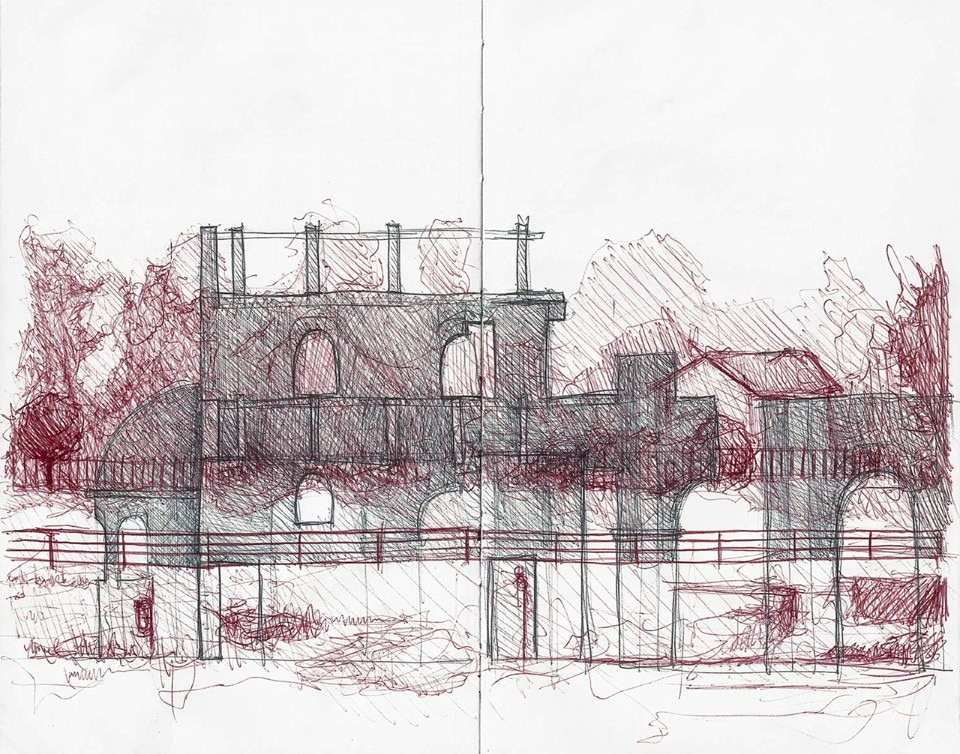
How do you create a silent but empathically effective dialogue between spectator and work?
With subtle details and sensations, structuring the design around this form of research. I always try not to have a single vision, but rather to identify an emotional fil rougeon a collective level. I structure my story with these coloured notes, constructing my intimacy in a public space, imagining to communicate this dimension to whoever experiences that venue.
How important is it to feel the need for nothing every now and then?
Due to a kind of horror vacuiof thought and action, I believe it is the greatest utopia in my life. It is related to the installation “Pensieri” which I created for Sapri in 2014. The man looking to the sea expressed this need. For me, having grown up in a place far from the sea, it was looking at a point in the countryside where the horizon was far in the distance, leaving everything else behind me. It is the synthesis of well-being: “Not needing anything” means that that which surrounds you is all that you need.
Enjoying your moments of nothingness, and desiring them, becomes a moment of inner fulfilment. Over time, I have developed a form of poetry which regards absence, not in the sense of nothingness, but that which is not, or which is not present.
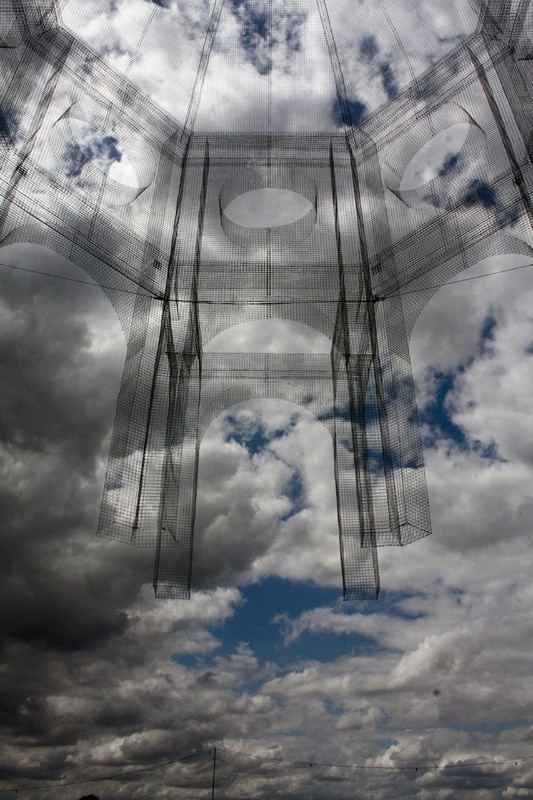
Tell us about Etherea.
They are three identical structures in different scales, for which I have used neoclassical architecture as a language to describe various points of contemplation. It narrates the relationship that we have with places. More precisely, the mnemonic process with which we remember them and render them ours.
Define yourself in a few words.
Over time I have realised that the story I am creating is very personal, almost a form of self-analysis, and it is tied to my way of relating with the world. If architecture is the means through which humankind becomes space, like my architecture I am a very outgoing person and I think big, but I also have a powerful form of shyness and transparency. I allow myself to be pervaded by the points of view of others. It is a way for me to also better understand my own.
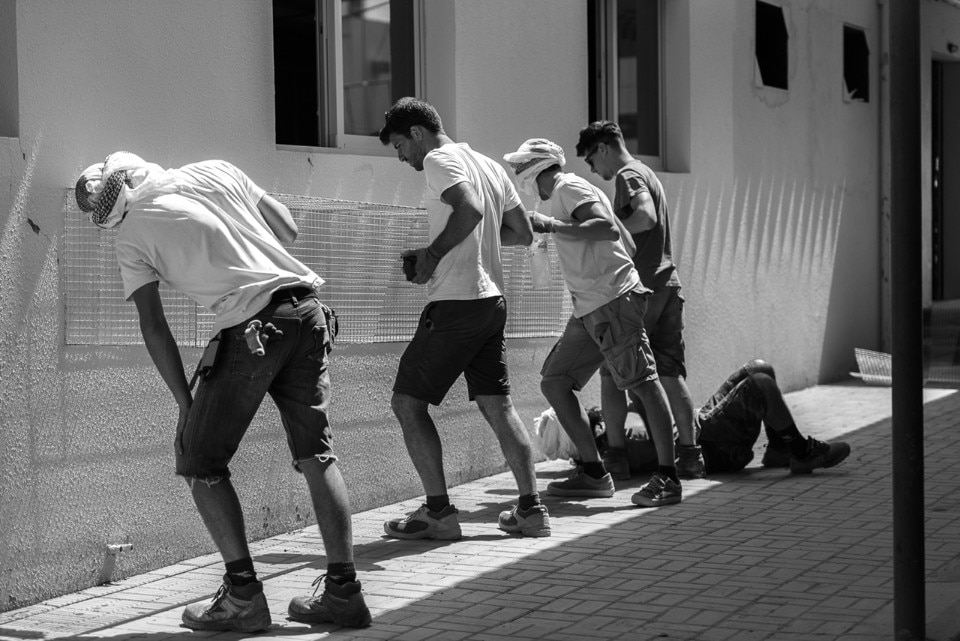
Is there a place in the world that represents you?
There is no one place in particular, but I certainly carry with me the echoes of my landscapes: the Brianza countryside, the little farmhouses and the scattered buildings, fallen into disrepair and consumed by vegetation. I have always thought that this type of architecture was a monument to a sensation.
If the monumental architecture of the grand cities represents the force of the super-man, then this decadence is the weakness of humankind. I don’t know if it represents me, but it is most certainly a very evocative place for me.
What do you need to be happy?
I need to be enthusiastic. And I find enthusiasm in collective situations in which all the people feel at home, free to experience certain circumstances as they want, and express their beauty in the most absolute manner, creating energy. This often happens, both in personal and professional situations.
The future. What are you working on?
I have a new space in the Mecenate district in Milan. A large workshop which contains areas dedicated both to design and to production. I hope that this can become a platform for collaboration with other artists. We are preparing an installation which will be presented in December in Barcelona. I continue to construct my imagination through the story that structures it.
